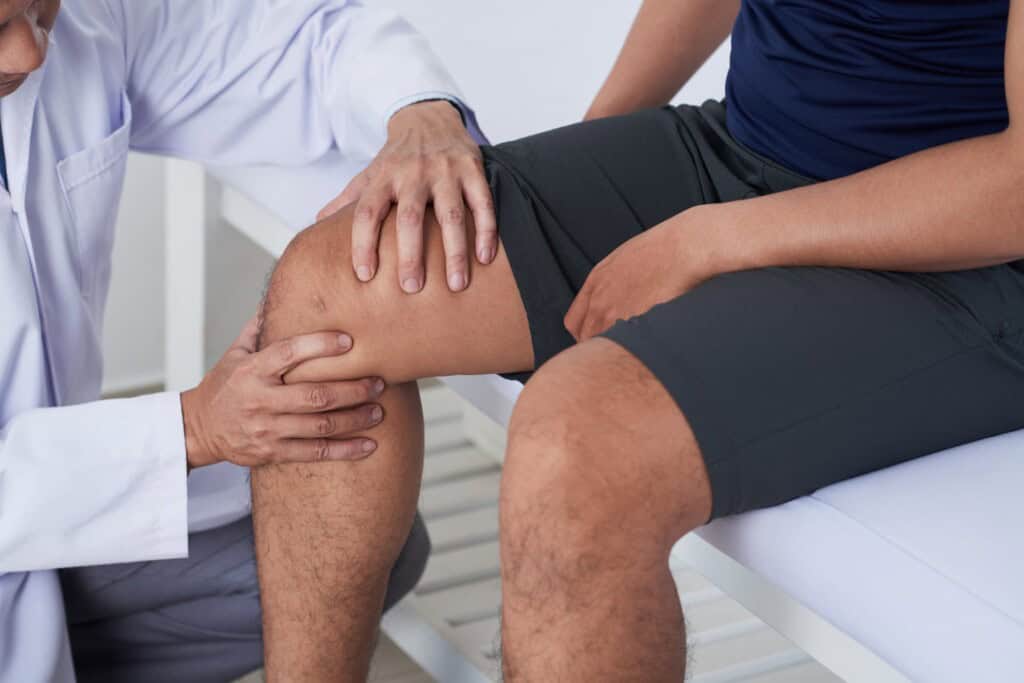Dealing with that stubborn ache on the outside of your knee or thigh? You’re not alone. IT Band Syndrome (ITBS) can be a real pain – literally. Whether you’re a runner, cyclist, or just active in general, this common condition can sideline you faster than you can lace up your shoes.
But don’t worry, there’s hope beyond the usual rest and ice packs. Bodywork therapy offers a holistic approach that tackles the root causes of ITBS, helping you find lasting relief and get back to doing what you love. Let’s dive into how bodywork therapy can be your game-changer in overcoming IT Band Syndrome.

Ever experienced that persistent ache on the outside of your knee or thigh that just won’t quit? That’s IT Band Syndrome (ITBS). Let’s break it down.
The iliotibial (IT) band is a thick strip of connective tissue running along the outside of your thigh, from your hip to your knee. Its primary job is to stabilize your knee and hip during activities like running, walking, or biking, keeping your leg steady and not wobbly.
The IT band is meant to be tight during these activities to provide the necessary support. However, when it becomes overly tight or inflamed, it can lead to trouble and pain, a condition known as IT Band Syndrome (ITBS).
The fascia around the muscles attached to the IT band can adhere to it, creating tension in the knee or hip. This tension can misalign your hip or knee joints, leading to discomfort and further complications.

How do you know if you’re dealing with ITBS? Here are the usual suspects:
The pain often starts mild but can become more intense if the condition is not addressed.
ITBS pain can range from a dull ache to a sharp, burning sensation. One client told me it felt like “a knife stabbing the side of my knee every time I ran.” Ouch.

ITBS can hit anyone, but some factors make it more likely:

A healthcare professional will usually perform a physical exam and ask about your activity levels and pain patterns. Sometimes, imaging tests like an MRI or ultrasound are used to rule out other conditions.

Conventional treatments for ITBS usually include:
Conventional treatments can offer temporary relief, but they often don’t address the root cause. Many find their pain returns once they resume activities. That’s where bodywork therapy steps in.

For ITBS sufferers, bodywork therapy can make a world of difference. Unlike conventional treatments that focus on symptoms, bodywork targets the root issue by:
Let me tell you about Emily. She’s an avid runner who came to me after months of battling ITBS. Emily had tried everything from rest to physical therapy, but the pain always returned once she started running again. She was even considering surgery as a last resort.
When Emily started bodywork therapy, we focused on deep tissue massage and myofascial release to address the tightness in her IT band. We also worked on strengthening her hip abductors and correcting her running form. After just a few months of consistent therapy, Emily not only cancelled her surgery but also ran her first pain-free half marathon! She continues to incorporate bodywork into her routine to keep ITBS at bay.
Surgery should always be a last resort, especially when there are effective non-invasive options like bodywork therapy. As seen in Emily’s case, many clients find that regular bodywork sessions eliminate the need for surgery altogether.

Different types of massages offer unique benefits for ITBS:

Absolutely, self-massage can be a valuable tool in managing ITBS. Here are a few techniques:

Preventing ITBS is all about balance and proper care. Here are some tips:
Recovery time can vary based on the severity of your condition and how diligently you follow your treatment plan. With bodywork therapy, many people experience significant improvement in one to a few sessions. However, it’s important to remember that consistency is key. Regular sessions and maintaining good habits can prevent ITBS from making a comeback.

Dealing with IT Band Syndrome can be frustrating and painful, but there’s hope beyond conventional treatments. Bodywork therapy offers a holistic approach that not only alleviates symptoms but also addresses the root causes of ITBS. By incorporating techniques like deep tissue massage, myofascial release, and trigger point therapy, bodywork therapy can provide lasting relief, improve mobility, and prevent future injuries.
If you’re tired of temporary fixes and want to find a real solution to your ITBS pain, consider giving bodywork therapy a try. It’s a powerful tool in your journey to recovery, helping you get back to the activities you love without the nagging pain.
Remember, taking care of your body now can save you from more serious issues down the road. So, why wait? Book a session with a professional bodywork therapist today and start your path to healing and wellness. Your body will thank you!